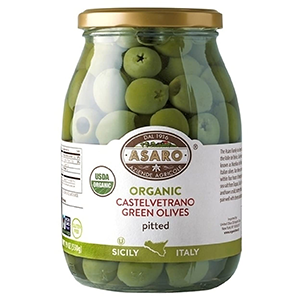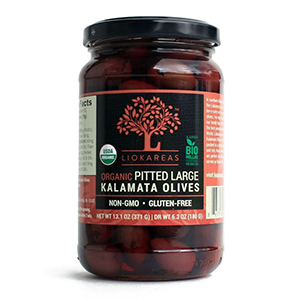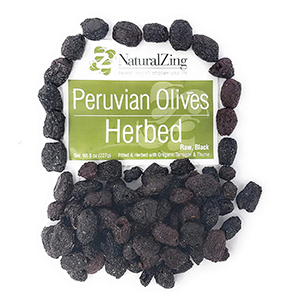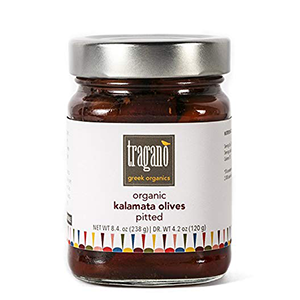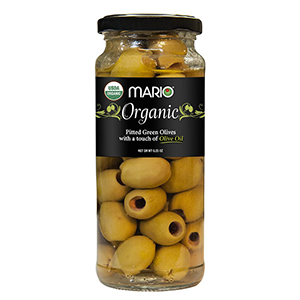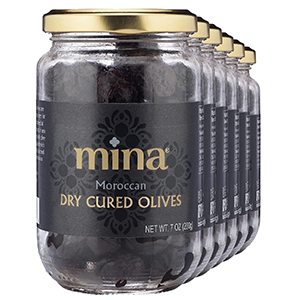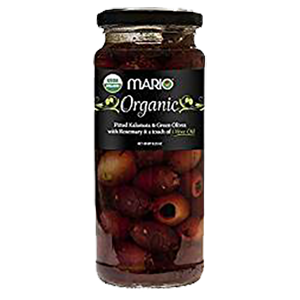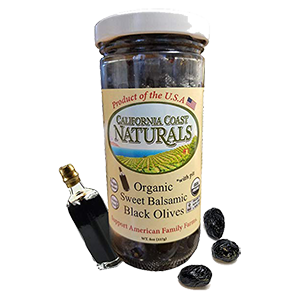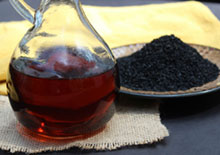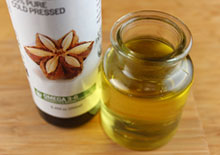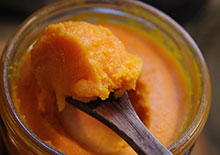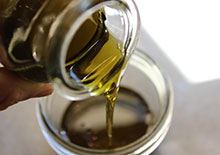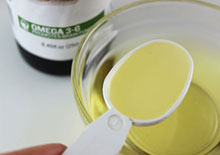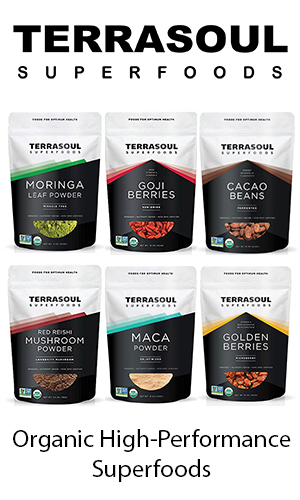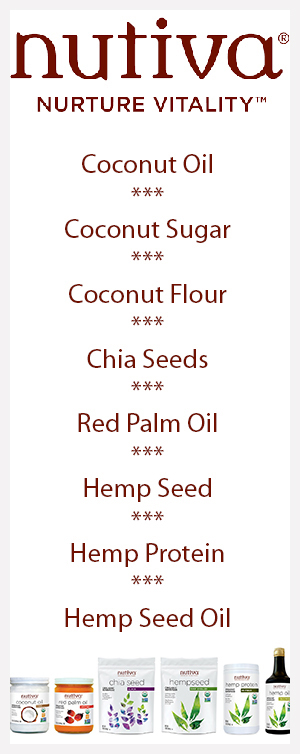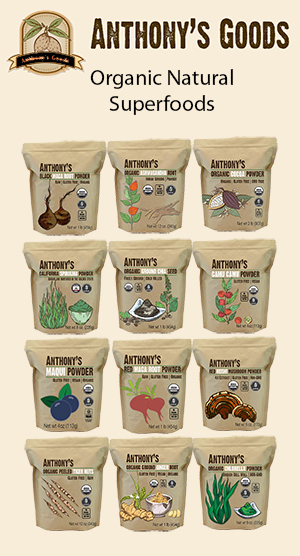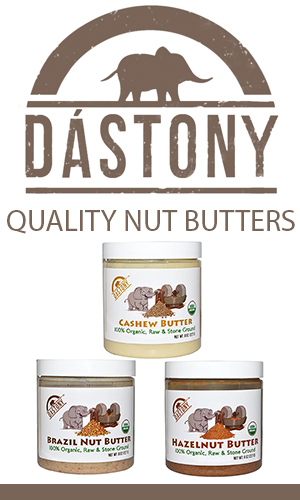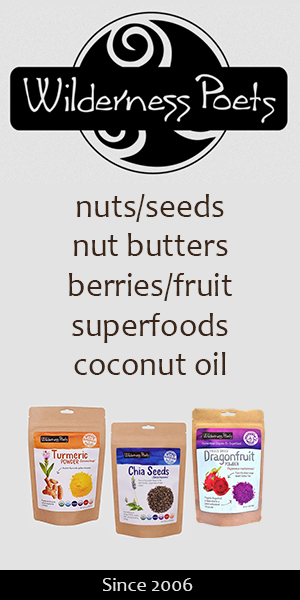Health Benefits of Olives, Difference Between Green and Black Olives
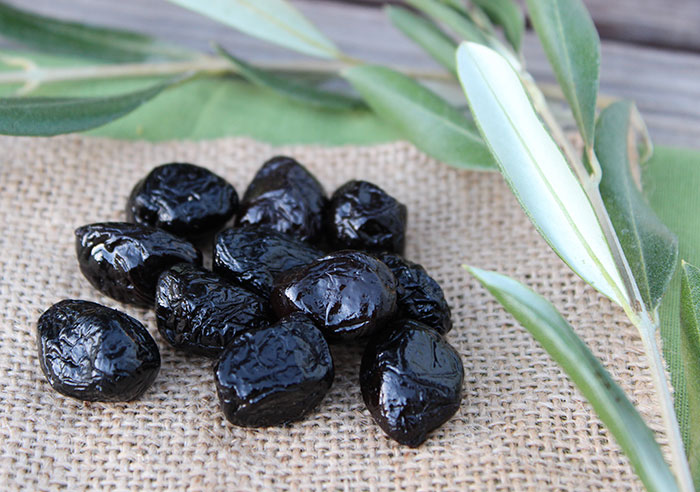
Olives are another one of those ancient fruits second only to grapes that were valued for their pressed juices as well as a food source. Because of its naturally bitter taste and crunchy texture, the raw olive was in fact first utilized for its "olive oil" rather than something you would actually eat ripe off the tree.
Eventually curing methods were implemented to make the pulp edible, essentially transforming a hard non-palatable fruit into a rich fatty and flavorful delicacy that is enjoyed by many olive-producing countries or as an imported product.
The olive comes from the tree species Olea europaea, one of the oldest fruit-bearing trees native to the Mediterranean climate zones. It thus has a well-documented past in the Mediterranean Basin and locations spanning from Portugal to the Arabian Peninsula, especially Spain, Italy and the region known as the Levant.
Olives and the olive tree, likewise, have strong symbolic associations in many cultures and religions common to these areas. The "Mount of Olives", a famous historical sacred site and place of worship in Eastern Jerusalem since Biblical times, was named after the olive groves that once covered it.
Archeological evidence indicates olive tree cultivation dates back to 2500 B.C., there is however some discrepancy whether this occurred first on the Greek island of Crete or somewhere between Turkey and Syria.
The olive tree, its fruits, oil and leaves are deeply rooted in Greek tradition and cherished as a symbol of peace and victory. Olive branches formed as wreaths, called kotinos, were once worn as trophies by ancient Olympic athletes and the original torch for the Olympic games burned olive oil as its fuel source.
According to Greek mythology, the olive tree was a gift planted by Athena, the goddess of wisdom, as a result of a contest with Poseidon, ruler of the sea. This legendary sacred olive tree is represented at the Parthenon temple ruins of the Acropolis, a location dedicated to the goddess Athena in her patron city of Athens, Greece.

About Olives and the Olive Tree
Not only are olive trees one of the oldest food and fuel resources utilized by humans, they are also one of the longest living trees on earth, growing between 200 to 2,000 years in age!
The olive Olea europaea tree species has oblong silver green leaves and the olives themselves are actually a type of drupe fruit with a single pit or large stone in the center. When used for consumption purposes, rather than for their oil, they are commonly referred to as "table olives."
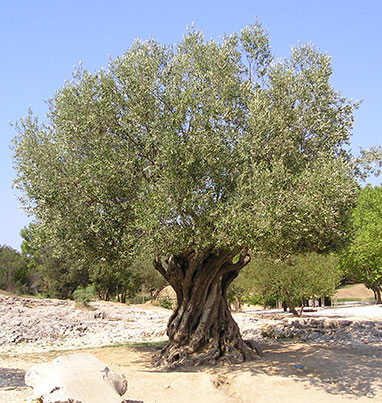
The olive in its edible form dates back to the Bronze Age, 3150 to 1200 BC. It is estimated to have been cultivated about 7,000 years ago and therefore today there are many hundreds of olive tree cultivars or olive varieties, all with their own distinct qualities, colors, sizes, shapes and tastes.
There are six generally recognized natural subspecies of Olea europaea which are
dispersed throughout different regions of the world.
Much
like the fig trees, Spanish missionaries brought olive trees to the Mediterranean climates of California, which is now the leading
olive-producing state in the U.S. They were also further spread to South America, particularly Peru, Chili and Argentina.
Some subspecies also grow in hot dry regions of Africa, Australia, New Zealand. Today, Spain is the largest producer of olives worldwide, followed by Italy, Greece and Turkey. Ninety percent of Mediterranean sourced olives are pressed into olive oil.
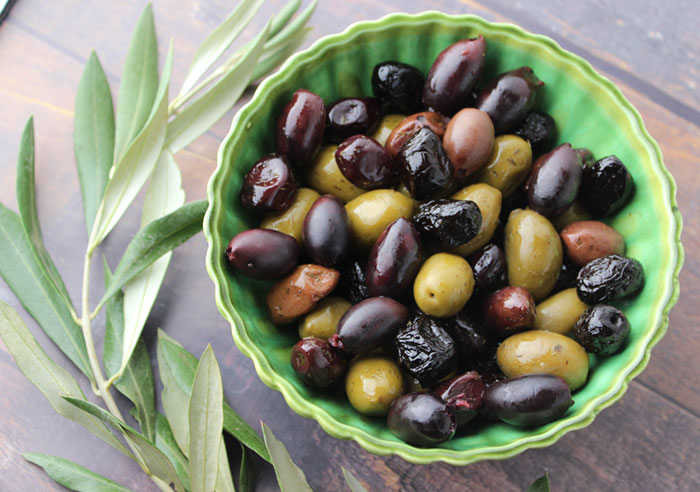
What's the Difference Between Black and Green Olives?
Green and black olives grow on the same tree but are essentially harvested at different times. Green olives are picked in the unripened stage, whereas black olives are picked when fully ripe in which case they turn a darker anthocyanin-rich purple to black color, depending on variety.
There is also actually several stages in between green and black, called "turning-color" or "semi-ripe" olives, in which the fruit is harvested at the beginning of ripen after the outer skin starts to turn darker reds or purples but the inner flesh remains mostly unripe.
While most olive trees produce both green (unripe) and black (ripe) olives, there are a handful of cultivars that start out green or black and stay this color after they mature. They are less common, especially on a commercial scale.
From a nutrient composition perspective, green olives are known to contain greater amounts of the phenolic compound known as "oleuropein" which tends to decrease considerably as they ripen on the tree. The oleuropein content however is notably reduced after the curing procedure that most all fresh olives must go through.
Which general olive variety you might enjoy more, green or black, is really a matter of personal taste. With so many different cultivars and curing methods, there is a very broad range of flavors and textures, especially to the olive connoisseur. We tend to go for ripe black olives over green types that haven't been ripened to maturity.
Canned Black Olives are Not Real Black Olives
Additionally, there is a big difference between cured ripe black olives and canned black olives. Canned versions have basically been picked when green, cured with lye, then artificially blackened via oxidization and usually the additive known as ferrous gluconate.
These types are not only very bland tasting, nothing like naturally cured olives, they are not ones we recommend consuming because of their toxic ingredients.

How Table Olives are Prepared or Cured
While an olive might look quite edible and tasty-looking when ripe on the tree, a simple mouth-puckering bite will tell you that it is Not.
Raw fresh olives are a type of fruit that needs to be leached and cured to soften the flesh and reduce the bitter flavor caused by compounds like oleuropein. Ripe black olives do not need to be cured as long however because bitter components are less present.
Basic Types of Curing Methods
Curing olives is considered an artisanal craft with a great number of regional styles, techniques and final ingredients and seasonings incorporated. Generally, however, there are several different types of commercial processing methods utilized which make olives edible and more palatable to consume.
- Brine Curing: This is a traditional Greek or Sicilian lacto-fermentation procedure that involves soaking the olives in a salt water brine over a period of time. This converts the natural sugars in the fruit into lactic acid and lactic acid bacteria over time help to break down the bitter phenolic content. The brine is changed often to remove these substances.
- Dry Salt Curing: The raw olives are packed in salt for a month or much longer. The salt is removed and the olives are frequently soaked or bathed in olive oil briefly to plump them up. This process produces a wrinkled textured and it only used on ripe black olive types. The oil curing method also a type of salt dry curing that further packed in olive oil.
- Water Curing: The raw olives are soaked and rinsed in water over a period of many months. Then the olives are usually place in a seasoned brine solution or vinegar.
- Lye Curing: This is a Spanish style usually applied to green olive varieties. It basically involves treating the olives repeatedly in a lye solution. They are then rinsed several times to help remove these caustic chemicals. Brining methods are further employed. It is the fastest curing method but also the most potentially toxic.
After cured or fermented, olives are sometimes available dry salted, but are more frequently packed and sold in olive oil or wine vinegar.
Are Olives Considered a Raw Food?
After doing quite a bit of research on this subject, we found that most (but not all) olive producers apparently flash sterilize their raw table olives with a quick blast of steam before the curing process. This supposedly preserves their natural enzymes and beneficial microflora, which would make sense since they are required when lacto-fermentation techniques are used.
Quality suppliers we enjoy do not likewise pasteurize their final product. This procedure is not needed as cured olives are a naturally preserved food. Fermented brine-cured olives may also therefore offer some probiotic properties.
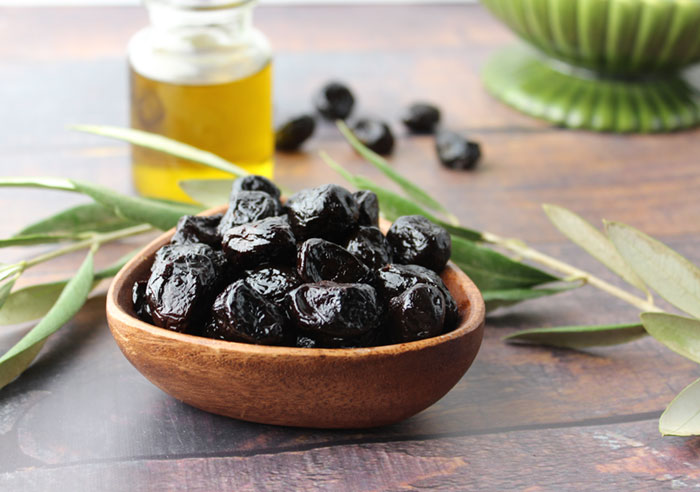
Health Benefits of Olives
A Source of the Good Fats
All table olives are high in fat and are comprised of about 80-85% total fat content. They are however considered one of the good dietary fats to consume as part of a health promoting diet. Olives and their pressed oils are a key component to Mediterranean diets, which emphasizes fresh vegetables, fruits, nuts, whole grains, legumes and seafoods, while limiting refined and processed foods.
Olives Contain Monounsaturated Oleic Acid
The olive oil in olives is a monounsaturated fat primarily composed of 75% oleic acid. Oleic acid, also called octadecenoic acid, is classified as a monounsaturated omega-9 fatty acid. It is found abundantly in fruits like avocado and durian as well as in certain seed and nut varieties. The olive, however, is one of the top plant-based sources of this nutritive fatty acid, offering it in a greater ratio of total fat content.
Dietary fats and oils composed of monounsaturated oleic acid, like
olives and olive oil, are considered heart healthy fats to include on a regular basis. In the book entitled "Olives and Olive Oil in Health and Disease Prevention", it was suggested that a higher percentage of monounsaturated fats like oleic acid in the diet is associated with a reduced risk of coronary heart disease.
Likewise, the American Heart Association, also states that "Monounsaturated fats can help reduce bad cholesterol levels in your blood and lower your risk of heart disease and stroke." (*)
Fat and Nutrient Profile of Olives
Seven sun-dried black botija olives are shown to contain 4 grams total fat, but 3 grams of this is in the form of monounsaturated fat, while 0.5 grams is in the form of saturated and polyunsaturated fat.
Total Fat - 4 g
- 3 g monounsaturated
- 0.5 g saturated
- 0.5 g polyunsaturated
Other Nutrients
- vitamin E, 6% DV
- vitamin A, 2%
- calcium, 2%
- iron, 2%
Keep in mind, when we're talking about the health benefits of olives, that there is a wide range of olive types and curing methods. Therefore, nutritional composition may also vary in accordance to these factors.
The main vitamin and minerals typically claimed to be found in most olive varieties include vitamin E, vitamin A, calcium, iron and copper with small amounts of magnesium, zinc and selenium.
Cured Olives are High in Sodium
While raw olives, picked fresh off the tree, aren't naturally high in salt content, they are typically cured in salt or a salt-water brine to make them edible which increases salt levels significantly.
So, if you're someone looking to reduce sodium levels, we definitely advise limiting your intake.
Sodium content may differ, however, depending on processing techniques. The type of salt used is also something to consider. We recommend seeking out quality brands and artisanal varieties that use natural curing techniques and sea salt as opposed to refined table salt.
The Throuba Olive
There is, in fact, one particular type of olive we came across, called the Throuba olive, that is supposedly edible when sun-ripened and doesn't require much processing. Some European suppliers are now offering them as a low salt alternative as they contain about half the amount of salt content.
Both the American Heart Association and FDA recommend no more than between 3/4 - 1 teaspoon or approximately 1500 mg - 2300 mg per day for adults, depending on current state of health and other factors. (*)
Sun-dried botija olives, for example, contain 220 mg or 9% the Daily Value (based on a 2,000 calorie diet) for 8 olives. Kalamata olives, according to product labeling, are shown to contain 180 mg or 10% the DV for 10 olives.
One way to potentially reduce the salt content in olives is to rinse or soak them in water and strain the liquid.
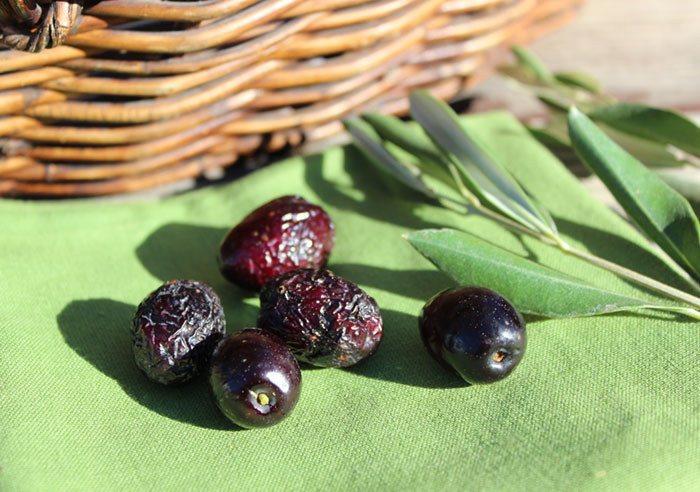
Source of the Antioxidant Vitamin E
Black olives are a good source of the fat-soluble antioxidant vitamin E, mostly in the form of alpha-tocopherol.
Consuming vitamin E rich food sources helps to prevent oxidative damage as well as nourishes the eyes, moisturizes and beautifies the skin and hair, offers protective effects to the immune system and assists with many other bodily functions.
Do Olives Contain Phenols, Like Oleuropein?
Phenolic components have been identified in olives, such as oleuropein and its derivative hydroxytyrosol, which are known for their strong anti-inflammatory, antimicrobial and antioxidative influence. (Source)
While many online sources seem to be claiming that olives, as a whole food, are high in these substances, we have not actually found solid evidence of this reality.
Most current scientific research is in fact on the oil and leaves, not on the olive fruit itself. Depending on the cultivar and curing techniques, some olives may contain greater amounts of phenols, like oleuropein, and some may not. Generally, the more bitter tasting the olive the higher this percentage.
The main two reasons cured olives may not be good sources of oleuropein:
1) Not High in Ripe Olives - As we mentioned previous, oleuropein is a substance that is especially present in unripe green olives and starts to decrease in the early to final stages of ripening as fats and nutrients like vitamin E tend to increase. (*)
2) Reduced After Curing or Debittering Process - The fermentation or curing of raw fresh olives naturally leaches out the phenolic components, such as oleuropein, that frequently causes bitterness and an unpalatable hard texture. (*) Processing methods are also known to diminish the anthocyanins found in black olives.
More Oleuropein in Olive Oil and Olive Leaf Extract
There are actually much higher levels of phenols in extra virgin olive oil which is typically the juice pressed from a large percentage of fresh raw green or semi-ripe olives rather than ripe black ones.
The olive
leaf itself also contains very high amounts of oleuropein. The
dietary supplement known as "olive leaf extract" was created to provide this
compound in a concentrated bioavailable form. It is used as a anti-inflammatory and anti-microbial agent and has been studied for its potential cardioprotective qualities and benefits for candida infections. (*)

Health Benefits of Olives, Best Types to Consume
- Cured with sea salt rather than refined varieties.
- Naturally cured or fermented without the use of chemicals like lye-based solutions.
- Certified organic or grown without pesticides.
- Not pasteurized or high-heat treated.
- Contain no additives or preservatives.
- Quality artisanal brands purchased directly from producer.
How to Use
Because of their very salty taste, olives are more frequently used as a garnish or condiment-type food or are commonly eaten as a snack or appetizer.
They make a great addition to salads of all types and help to zest up more neutral tasting foods. We use the botija olive variety in our Mediterranean quinoa salad recipe.
Many cultures, of course, have their own special ways to utilize them in recipes.
Again, it is best not to eat too many because of their higher salt content. Most quality olives are so rich, full of flavor and appetite satisfying, you wouldn't normally consume more than 7-10 olives at a time.
Precautions:
It is best to avoid olives and their high salt content if you have high blood pressure or are trying to reduce dietary intake. Consult your healthcare advisor before regular consumption if pregnant, nursing, taking prescribed medication or if you have a serious medical condition.
Shop Related Products (About Affiliates & Amazon Associate Paid Links)
Affiliate Disclaimer: This section contains affiliate product links. If you make a purchase through our recommended links, we receive a small commission at no additional cost to you. Thanks for the support.
